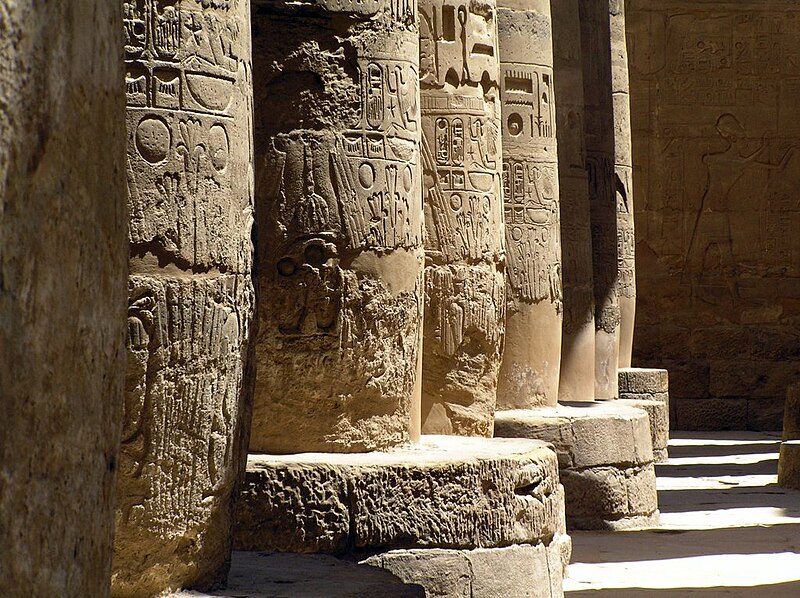13 Chapter 3.6: Egyptian Tombs

EGYPTIAN TEMPLES
In the New Kingdom Egyptian Pharaohs contributed to the construction of monumental temples to the gods. The most significant temple complexes are sprawling and consist of many different buildings. Similar to their art, Egyptian architecture possesses specific qualities that persisted through the centuries. The basic plan of a temple was repeated over and over in many different contexts.

Before and After
It’s easy to think of ancient Egypt as being a brown, dull-looking place, if we only look at the surviving ruins. In reality, though, ancient Egyptians loved bright colors. The two images below depict the columns of a temple as they appear today, and how a similar temple might have appeared when it was still in use.


Egyptian temples TASK:
The source(s) in this section describe the function and architectural features of Egyptian temples. After watching the videos, please respond to the accompanying questions.
The Temples of Ancient Egypt
Ancient Egyptian temples TASK prompt:
What development in temples took place in the Old Kingdom?
What were the components of the classic Egyptian New Kingdom temple?
What was king’s role relative to the temples and how was his authority asserted there?
What made the temple a hub for the common people?
How were the statues in the courtyard used?
What activities took place at the outer temple precinct?
Why did the ceiling lower and the floor raise moving back to the inner sanctuary?
Name one symbol in the temple that referred to the world’s creation myth.
How was the journey of the sun referenced?
What effect was created as one passed through the temple?
What activities did the high priest perform (name one ritual)?

